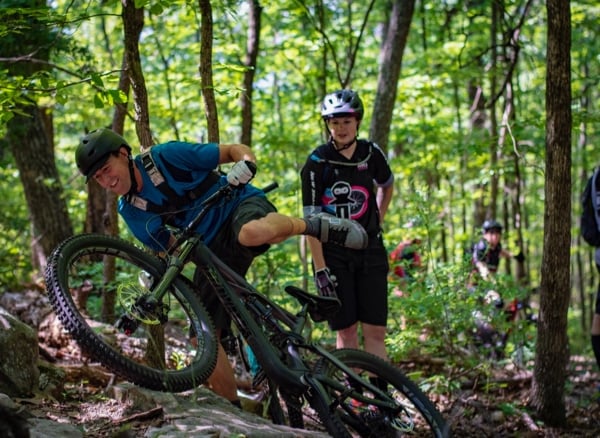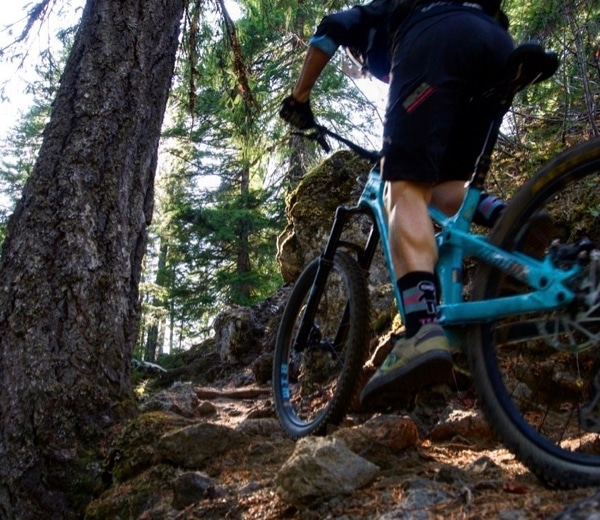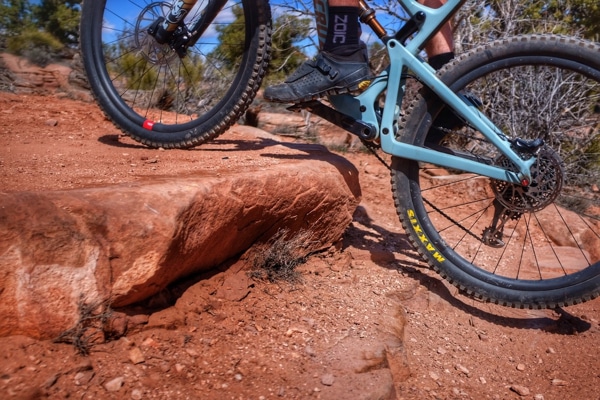Let’s turn that frustrated frown upside down!

A lot more goes into technical climbing than just “pedal and pray”! Getting your bike up and over technical terrain requires you to use multiple tools in your riding toolbox usually in quick succession, at low speed and with precision. Let’s break down the art of technical climbing and see if we can get you clearing those daunting climbs with less frustration and more success.

1. Set up for success
Set your speed prior to starting the climb. When you first start technical climbing you may come to the conclusion that momentum improves your odds of success. And to some degree, you’d be right. However, the “right” amount of momentum is going to be relative to the length, technical features and grade of the climb in front of you. If it’s a relatively short technical section, you may be able to use momentum to blast up and over any obstacles by relaxing and letting your suspension do the work. However, if it’s a long(er) technical climb where momentum will diminish before the top, you must have the skills to tackle the terrain at low(er) speeds.
Next, choose a gear that doesn’t have you spinning out of control or that isn’t so hard you can’t turn the pedals over.
Get off your…saddle! If you are seated, you can’t move your weight around to stay centered over the bike as you climb. So, up you go!
Spot your line by using your route finding skills to spot the path of least resistance and go in with a plan of attack.

2. Stay centered
Climbing is a delicate balance and involves constant movement between the front and back of the bike. Keep your center of mass over the pedals by subtly moving forward and back to maintain even weight control on both tires. If your front tire starts to lift off the ground, you’ll quickly lose directional control (and that’s when you get off balance and topple over). No one likes toppling over. Instead, quickly bring your weight forward to counteract. On the opposite end, if you back tire starts to spin out, bring your weight back to counteract. Sometimes you might need a big (not-so-subtle) shift of weight to help propel your bike up and over a larger obstacle.

3. Eyes on the prize
Look where you want to go! If you’re staring straight at a rock in your way, guess what? You are going to ride straight into said rock! Really. Instead of resorting to “deer in headlights”, see the obstacles in your path, figure out what skill you will utilize to get over or around the obstacle, and then look past it at your exit. Use your vision to constantly be working out the puzzle in front of you and don’t get caught staring at one spot!
4. Dig into your toolbox
Depending on what you encounter on your climb, here are a few skills you might put to work:
Pedal Assisted Wheel Lift
Sometimes unweighting your front wheel isn’t enough and it gets hung up on an obstacle. In this case, it’s time to pull out the pedal-assisted wheel lift from your toolbox. This is done by timing the your pedal stroke so that the power stroke assists you in getting your front wheel up and over the obstacle. The pedal assisted wheel lift is just like the start of a wheelie.
Ratchet
If you find yourself clipping a pedal, put your ratcheting skills to work! A quick adjustment of your pedal positioning can be the different between cleaning the climb, or not.
Rock Dodge
It is critically important to be aware of the path of both your front-wheel and rear-wheel on technical trail. Each wheel is likely following its own line, especially as you’re traversing through rocks or roots. Being aware of your wheel tracking takes time and practice. Practicing the rock dodge skill on a flat area will help you be more aware of this wheel tracking so you can better set up for a successful line choice when technical climbing.
Track Stand
The track stand will give you the upper hand in technical climbing! Having the ability to stop, think and potentially change directions or adjust your line can be highly valuable. Mastering a track stand takes consistent practice, you’ll find yourself using this skill regularly and your technical climbing will improve dramatically. You’re welcome.
5. Troubleshooting
Still struggling on a technical climb? Not sure what you’re missing?
First, check yo-self. Where are your thoughts? Are you thinking, “I’m never going to make this climb”. Or, are you saying, “I can do this. I’ve got my toolbox of skills and I’m making it to the top today!”. You should never underestimate the power of positive thinking.
Try to figure out what is happening right before you put your foot down. Is your back tire getting hung up on a root? Is your front wheel starting to pull up and off the ground? Once you determine the problem, pick the skill best suited the help you fix the mistake.
How can you tell if you are properly centered over the bike? When climbing, if your bike were to magically disappear from beneath you, you should land balanced on your feet. You shouldn’t go tumbling forward and you shouldn’t go somersaulting backyard. Landing means you’ve properly adjusted your body position to the angle of the climb so you are not too far forward, not too far back.
What are you waiting for? Get out there and get climbing!




Lots of good stuff. I’d add track stand and hopping sideways for the really tough sections. Can ride forward on your saddle too to avoid spinning out or the extra energy standing takes.
I’ve been working at getting more proficient at shifting down 2 gears at a time, do that right before the steepest and or most technical part and you can focus better at having the proper balance and pedal position for that hard part.